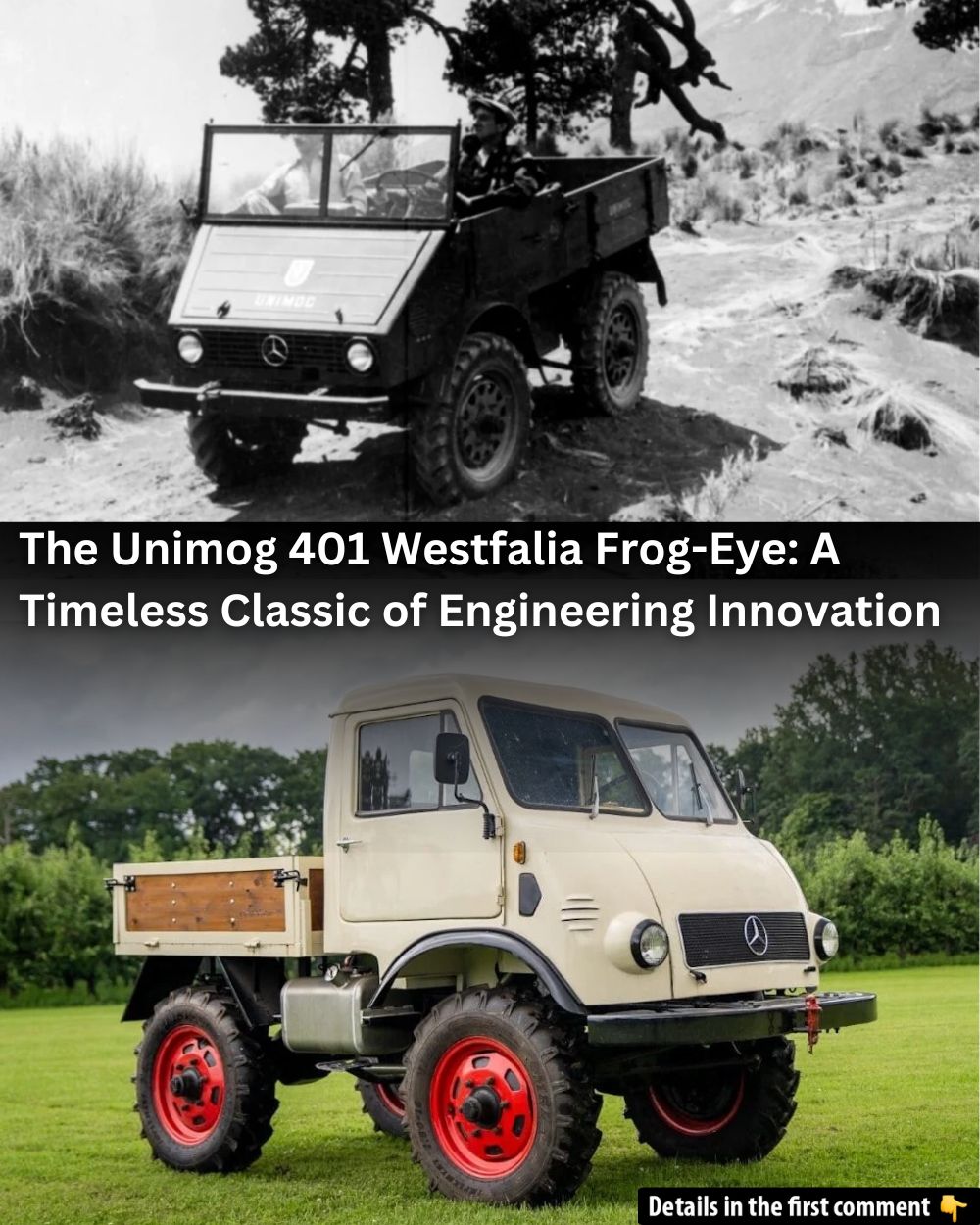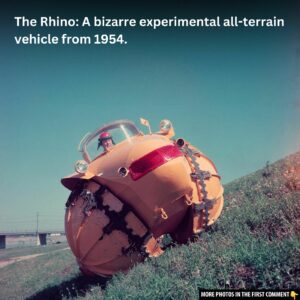The Unimog 401 Westfalia “Frog-Eye” is a rare gem in the world of vintage 4x4s, blending rugged utility with unique design. Born out of post-war innovation, this 1955 model represents a masterclass in engineering, offering a glimpse into the future of off-road vehicles. With its iconic closed cab and exceptional restoration, this Unimog continues to captivate collectors and enthusiasts alike, showcasing its timeless appeal and versatility.
The Unimog Legacy: A Revolution in Farming and Transport
The journey of the Unimog begins in the final stages of World War II. In 1944, the first plans for the Unimog were drafted in Germany, where engineers sought to create a hybrid vehicle capable of performing the duties of both a tractor and a truck. The original concept focused on creating a vehicle that could navigate narrow farm fields while also functioning on the road.
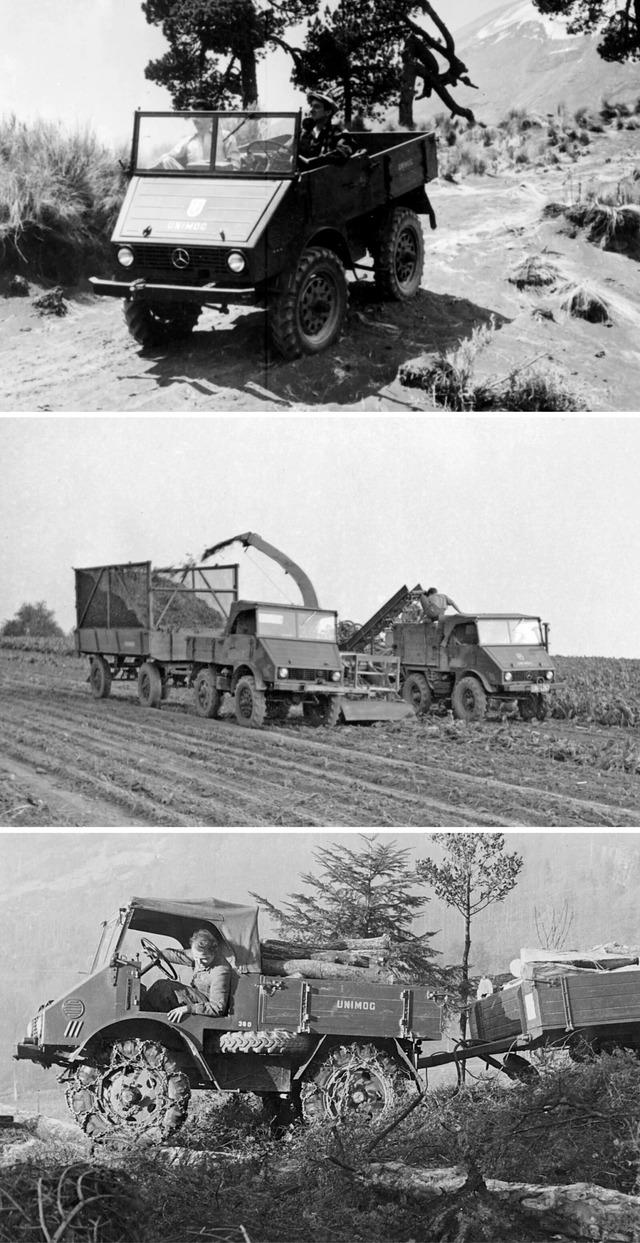
The design of the Unimog was revolutionary — it featured a four-wheel drive, portal axles for increased ground clearance, and power take-off (PTO) connections at both the front and rear, enabling it to operate various agricultural machinery. These innovations allowed the Unimog to tackle a variety of tasks, making it indispensable for farmers.
By 1951, Daimler-Benz, recognizing the potential of the Unimog, took over its production, ensuring its legacy as a dependable utility vehicle. Over time, the Unimog’s design would become more sophisticated, but the core principles of versatility and ruggedness remained unchanged.
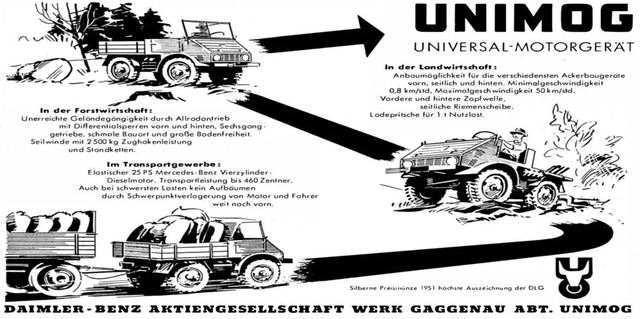
Video
Watch this video as the 1957 Unimog 411 Frogeye is unloaded from transport, showcasing its rugged design!
The Westfalia Frog-Eye Conversion: An Innovative Solution
In the 1950s, Unimogs were still commonly built with open cabs, often covered by canvas soft tops that did little to protect drivers from the elements. While these cabs were functional, they were ill-suited for harsher weather conditions, particularly in colder climates. This issue was solved by Westfalia, a coachbuilding company that became famous for its van conversions. Westfalia took the initiative to create a fully enclosed cab for the Unimog, providing better protection from the wind, rain, and snow.
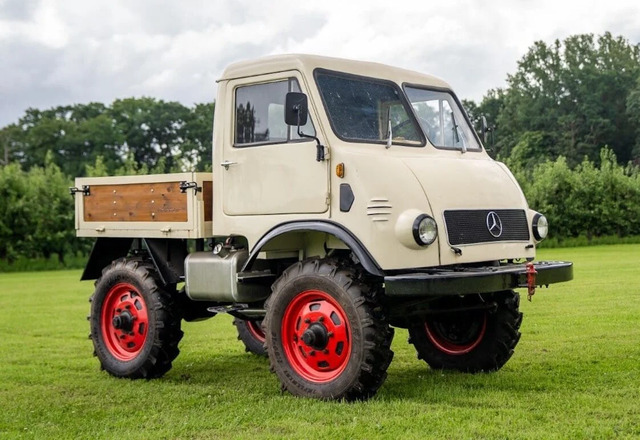
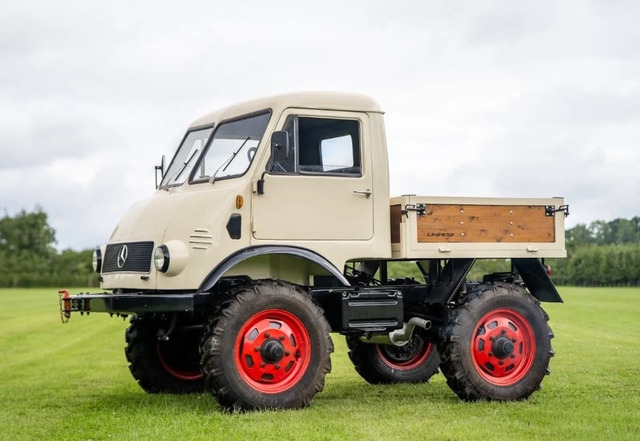
This new closed-cab version of the Unimog was affectionately nicknamed the “Frog-Eye” due to its unique appearance. The cab’s rounded windows and distinctive front shape set it apart from other vehicles of the time, giving it a character that has since become iconic. The Frog-Eye conversion offered not only superior weather protection but also increased comfort and usability for drivers, making it a popular choice for those who needed to operate their Unimogs year-round.
Specifications and Features of the Unimog 401 Frog-Eye
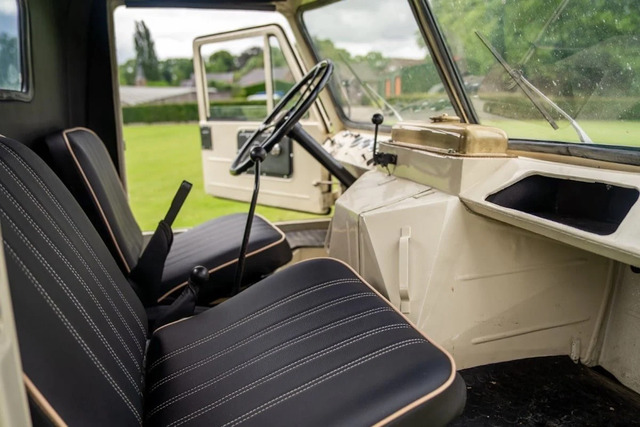
The 1955 Unimog 401 Westfalia “Frog-Eye” is a fully restored example of this rare and groundbreaking vehicle. Powered by a 1.7-liter, 1,767cc four-cylinder diesel engine, it delivers the dependable performance that the Unimog is known for. The vehicle is mated to a 6-speed manual transmission, which provides a precise driving experience. Additionally, the dual-range transfer case ensures that the Unimog can handle even the most challenging terrains, making it just as capable on off-road trails as it is on the highway.
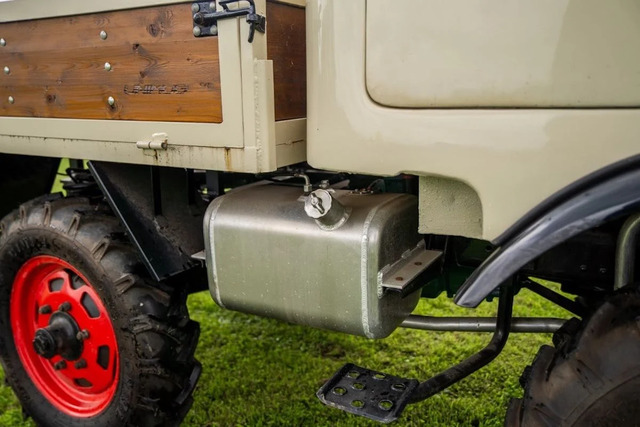
One of the key features that make this vehicle stand out is its distinctive aesthetic. Finished in a beautiful off-white color with red steel wheels, it carries a vintage appeal that harks back to its original factory specifications. The wood-lined cargo bed, a hallmark of many Unimogs, adds a rustic charm while underscoring the vehicle’s utilitarian roots.
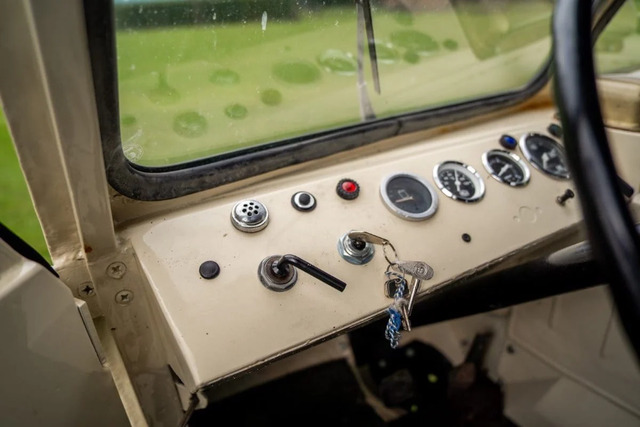
The restored vehicle, which has only 86,707 kilometers on the odometer, offers a seamless blend of modern-day functionality and vintage design. Its recent restoration included complete renewal of the electrical systems, ensuring that this Unimog 401 runs as smoothly as it did when it first rolled off the production line.
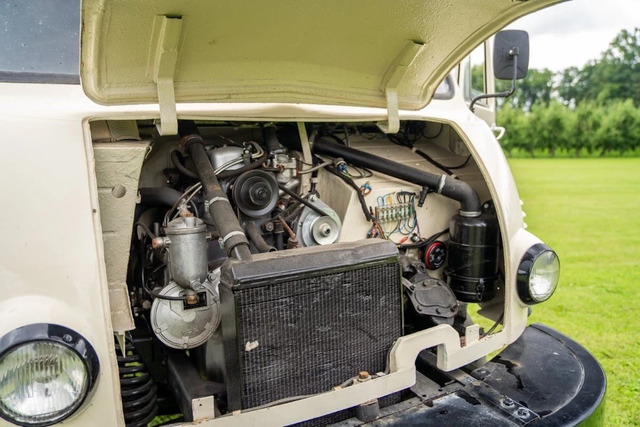
Restoration and Condition of the 1955 Unimog 401
The Unimog 401 “Frog-Eye” you see today has undergone a meticulous restoration process in Belgium, returning it to its original glory. With the restoration completed by skilled craftsmen, the vehicle retains its distinctive look and performance features, faithfully replicating the design of the factory model. The attention to detail in this restoration cannot be overstated, as it involved not only the aesthetic refinishing but also a comprehensive overhaul of the vehicle’s mechanical systems.
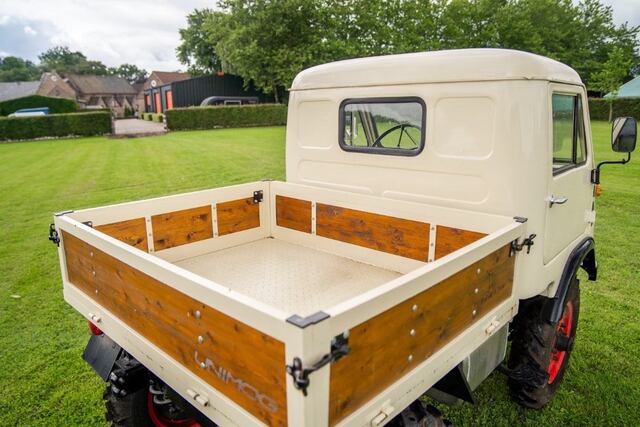
The electrical systems were fully renewed during the restoration, and the vehicle’s operation is described as fully functional. This Unimog is now a living, breathing example of German engineering from the 1950s, and its current condition proves the durability of the design and the care it received throughout its life.
Historical Significance and Collectibility of the Unimog 401 Frog-Eye
The 1955 Unimog 401 Westfalia “Frog-Eye” is a rare collector’s item, with only a handful of these vehicles surviving today. Due to the rarity of the Westfalia conversion and the Unimog’s historical importance, this vehicle has become a sought-after treasure for enthusiasts and collectors alike. Its combination of rugged utility and unique design has cemented its place as one of the most iconic vehicles of the post-war era.
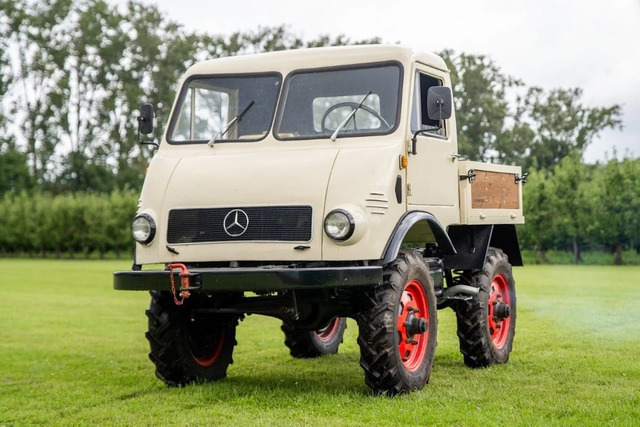
For collectors, owning a restored Unimog 401 “Frog-Eye” is not just about having a rare piece of automotive history; it’s also a way to appreciate the ingenuity of the Unimog’s design. These vehicles are not only functional but also serve as a symbol of a time when engineering and practicality came together to create something that could adapt to almost any situation.
Explore more Photos of The 1955 Unimog 401 Westfalia “Frog-Eye”

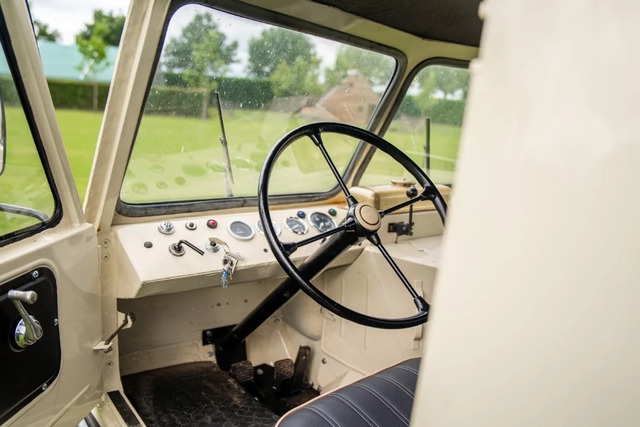
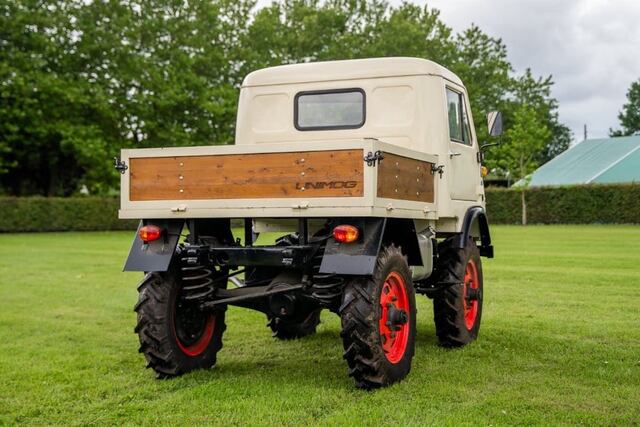
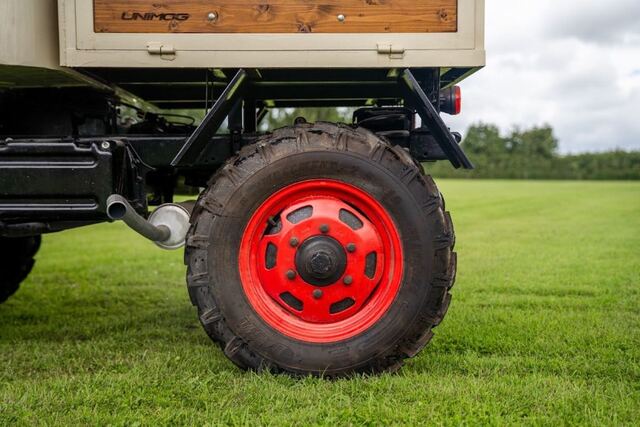

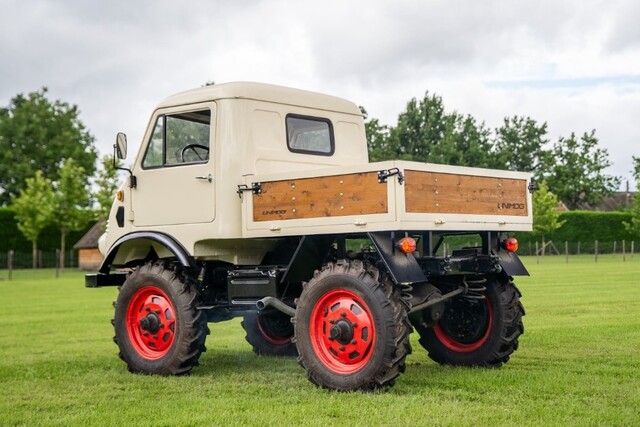
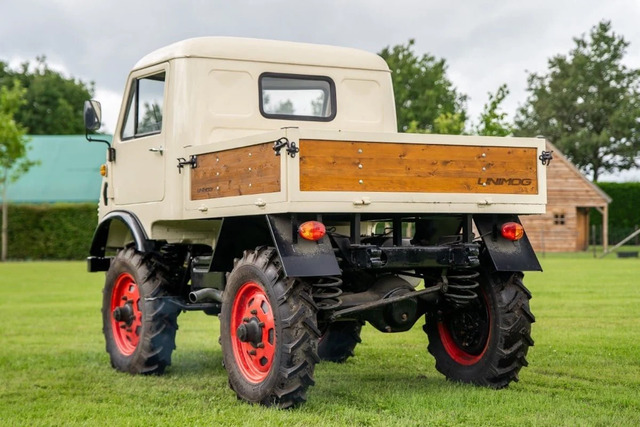
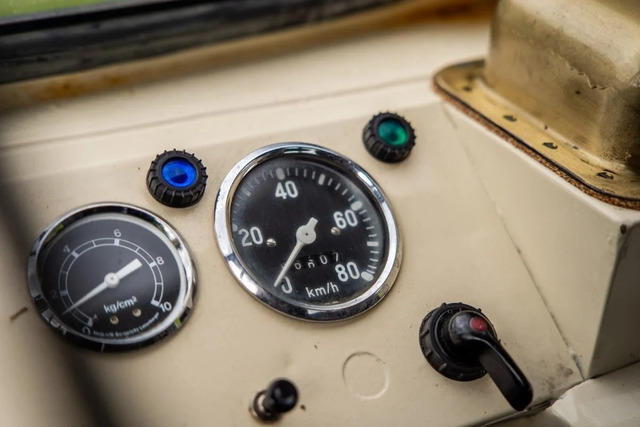
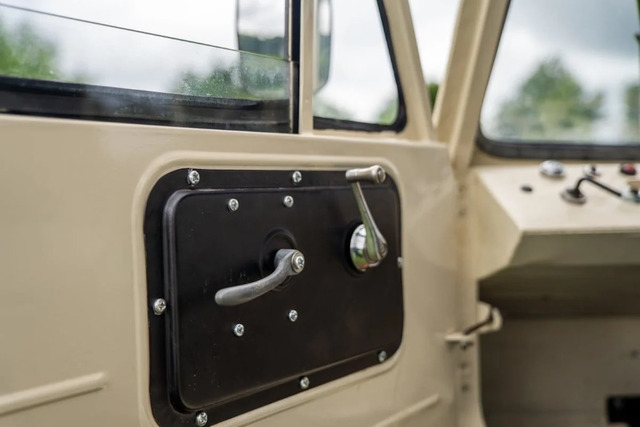

Conclusion: The Unimog 401 as a Symbol of Engineering Excellence
The 1955 Unimog 401 Westfalia “Frog-Eye” remains a testament to the brilliance of German engineering. Its innovative design and multi-functional capabilities, combined with its unique aesthetic and restored condition, make it a standout example of post-war automotive ingenuity. From its origins as a cross between a tractor and a truck to its transformation into a collectible piece of automotive history, the Unimog continues to inspire admiration for its versatility and timeless design.
Today, the legacy of the Unimog lives on in the form of modern-day models that continue to embody the spirit of rugged dependability. But for those fortunate enough to encounter a rare model like the Unimog 401 Westfalia “Frog-Eye,” it’s a reminder of the enduring power of creativity and engineering. Whether you’re behind the wheel or admiring it from a distance, this vintage Unimog stands as a symbol of excellence that has withstood the test of time.
Video
Watch this video to hear all about the Unimog 401 ‘Frog Eyes’ and its unique features!
